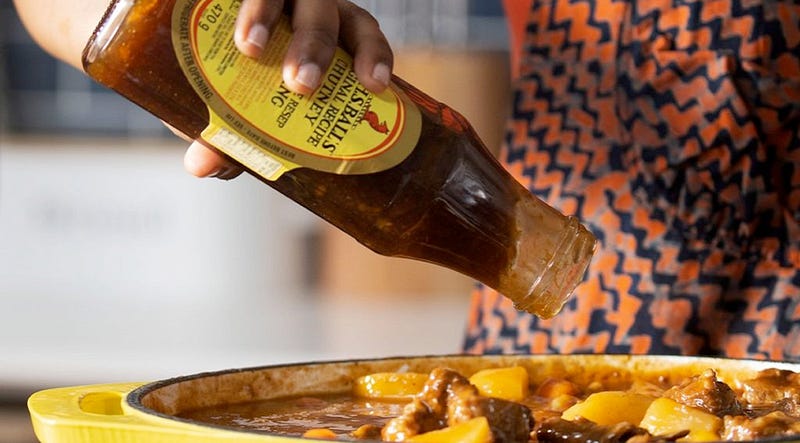
RECIPE
Mrs Ball’s Chutney, World Famous In South Africa
With this recipe, I come the closest to the chutney I have known since my youth
If you talk about chutney to a South African, their mind would no doubt go to Mrs Ball’s chutney. Almost every household in South Africa as tasted Mrs Ball’s chutney at least once. It’s the most known brand in the country — just like the title says.
Last year, a well-known German budget supermarket which you can find in many European countries, including The Netherlands, hosted South African weeks. My daughter and I jumped at the opportunity to go there, because they advertised chutney in their brochure. And not just any chutney… no, Mrs Balls chutney!
A bit of history
In 1870, Sarah Adkins — formerly Elizabeth Sarah Spalding — lived in Fort Jackson in the Cape Colony (now the Eastern Cape) with her husband. She started making chutney, which became popular amongst the locals.
However, she didn’t have any marketing skills.
In 1886, Amelia Adkins, the daughter of Sarah and Henry, married Herbert Ball in East London, South Africa. She took her mother’s chutney recipe with her when they moved to Johannesburg. She perfected the recipe and by 1914, the chutney was a popular bottled condiment at church bazaars and markets. By then it was called Mrs H.S. Ball’s Chutney.
In 1921, the family moved to Fish Hoek in the Cape Province, where they met a food exporter, Fred Metter. Soon they outgrew their premises and moved to larger factories in Deep River, and later in Retreat.
Where there are now several flavors of this chutney, Mrs H.S. Ball’s Original is still the favourite.
No chutney in the Netherlands
When I moved to Europe, there was no chutney over here.
Or rather, no Mrs Balls chutney.
That was the case for several years until someone started a South African shop in the middle of the country. If we wanted chutney, we had to take an hour and fifteen minute drive there.
And we did so a few times, but it took a big chunk out of our weekends, so I started looking for a different solution.
I found it in this recipe, which comes the closest to Mrs Balls chutney you can get.
Dried peach and apricot chutney
Ingredients
612 gram dried peaches 238 gram dried apricots 3 liters brown grape (malt) vinegar 2 1/2 kg white sugar 500 grams onions 12 grams of salt (about 20ml) 7.5 grams of red pepper (about 25 ml) — Add more if you want it stronger or add some dried chilli)
Method
- Soak the dried peaches and apricots overnight in the grape vinegar.
- Then cook the fruit in the vinegar until soft and drain. Don’t throw the vinegar away.
- Grind the cooked fruit into small pieces in a mill (or shred with a kitchen knife).
- Add the fruit, sugar (dissolved in a little of the vinegar) and onions (minced) and cook in a large pot in the vinegar. How much vinegar depends on the consistency, it should not be too runny or too thick, but as thick as the end product in the bottle.
- Add cayenne pepper and/or chili and cook for 2–2 1/2 hours. Stir now and then with a wooden spatula so that it doesn’t burn.
- To make chutney ‘hot’, add 75 grams of ground chilli.
- To make peach chutney, leave out the apricots and use 850 grams of dried peaches.
This chutney is delicious with another signature South African dish, bobotie.
Note: When you cook the chutney, you can preserve it for months. It’s delicious with any meaty dish, and especially with curries. But also great to eat with cheese!
🦋 About | 💻 Follow / Subscribe | 📚 Stories | 🦜 Twitter | 🔗Substack
